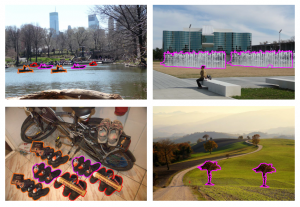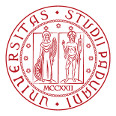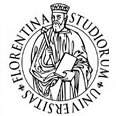A SIFT-based method for copy-move forgery detection
Collaborators: I. Amerini, G. Serra, R. Caldelli, L. Del Tongo, A. Del Bimbo
 In many application scenarios digital images play a basic role and often it is important to assess if their content is realistic or has been manipulated to mislead watcher’s opinion. Image forensics tools provide answers to similar questions. We are working on a novel method that focuses in particular on the problem of detecting if a feigned image has been created by cloning an area of the image onto another zone to make a duplication or to cancel something awkward.
In many application scenarios digital images play a basic role and often it is important to assess if their content is realistic or has been manipulated to mislead watcher’s opinion. Image forensics tools provide answers to similar questions. We are working on a novel method that focuses in particular on the problem of detecting if a feigned image has been created by cloning an area of the image onto another zone to make a duplication or to cancel something awkward.
The proposed approach is based on SIFT features and allows both to understand if a copy-move attack has occurred and which are the image points involved, and, furthermore, to recover which has been the geometric transformation happened to perform cloning, by computing the transformation parameters. In fact when a copy-move attack takes place, usually an affine transformation is applied to the image patch selected to fit in a specified position according to that context. Our experimental results confirm that the technique is able to precisely individuate the altered area and, in addition, to estimate the geometric transformation parameters with high reliability. The method also deals with multiple cloning.
In our recent paper published by the Signal Processing: Image Communication journal, this method has been extended by using J-linkage to obtain a better estimation of the geometric transformation parameters. It is a necessary step in order to obtain an accurate forgery localization and and accurate estimation of the cloned areas.
Related publications:
[bibtex file=ballan.bib key=spic13][bibtex file=ballan.bib key=tifs10][bibtex file=ballan.bib key=icassp10]
Datasets:
- MICC-F220: this dataset is composed by 220 images; 110 are tampered and 110 originals.
- MICC-F2000: this dataset is composed by 2000 images; 700 are tampered and 1300 originals.
The forged images are obtained, in both datasets, by randomly selecting a rectangular patch and copy-pasting it over the original image after several different attacks (rotation, scaling, translation, etc.).
- MICC-F8multi: 8 tampered images with realistic multiple cloning.
- MICC-F600: this dataset is composed by 600 high resolution images containing realistic and challenging copy-move attacks; 160 are tampered images and 440 are originals. This file is password protected so send me an e-mail requesting the password if you are interested.
Software:
We release the MATLAB implementation of the copy-move detection approach presented in Amerini et al., TIFS 2011. We provide some scripts to replicate the detection experiments reported in our paper, and also some functions for copy-move detection in a single image. Please note that our code use several public functions and libraries developed by other authors; regarding these files, for any problem or license information, please refer to the respective authors.
- MICC-CMFD-1.0 – released May 8, 2012
 (tested on Linux Ubuntu 10.04)
(tested on Linux Ubuntu 10.04)
If you use MICC-F220, MICC-F2000 and MICC-F8multi datasets or our code, please cite the paper: I. Amerini, L. Ballan, R. Caldelli, A. Del Bimbo, G. Serra. “A SIFT-based forensic method for copy-move attack detection and transformation recovery”, IEEE Transactions on Information Forensics and Security, vol. 6, iss. 3, pp. 1099-1110, 2011.
If you use the MICC-F600 dataset please cite the paper: I. Amerini, L. Ballan, R. Caldelli, A. Del Bimbo, L. Del Tongo, G. Serra. “Copy-Move Forgery Detection and Localization by Means of Robust Clustering with J-Linkage”, Signal Processing: Image Communication, vol. 28, iss. 6, pp. 659-669, 2013.
Press coverage:
- “Ecco come si trucca un’immagine”: l’esperto spiega il fotoritocco del Pulitzer – Repubblica, January 2014
- “Così si trucca l’immagine” – Corriere della Sera, January 2014
- Servizio TV “Zoom RTV38: Cacciatori di tarocchi” – RTV38, March 2014



